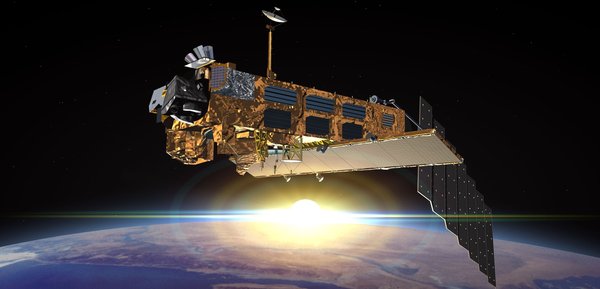About
ESA Climate Change Initiative LOng-LIved greenhouse gas PrOducts Performances project
Background
For a complete understanding of Earth’s climate, it is essential to understand the full basket of atmospheric gases that exhibit a large global warming potential or a strong impact on the ozone layer.
ESA's Climate Change Initiative is already generating robust satellite-based timeseries for the greenhouse gases water vapour, carbon dioxide (CO2) and methane (CH4). However, several other long-lived greenhouse gases (OLLGHGs) warrant systematic observation, in particular, nitrous oxide (N2O) and halogenated carbon compounds (CFCs, HFCs, HCFCs, PFCs) are also considered by GCOS as Essential Climate Variables (ECVs, GCOS-defined Essential Climate Variables).
These gases exhibit significant global warming potentials and provide a major contribution to radiative forcing uncertainty estimates. Nitrous oxide and chlorine-containing OLLGHGs are also the main source of anthropogenic ozone depletion, with the latter group regulated internationally under the 1989 UN Montreal Protocol.
Satellite Observations & OLLGHGs
Several satellite instruments provide information on the atmospheric abundance and distribution of the OLLGHGs, notable examples being: Envisat MIPAS, Scisat ACE-FTS, MetOp IASI, and Aura HIRDLS. Taken together, these and other instruments provide a valuable multi-mission resource for monitoring and understanding the role OLLGHGs in the atmosphere over the last two decades. Full exploitation of this satellite data will contribute to narrowing-down uncertainties related to the greenhouse-warming and ozone-depleting effects of the OLLGHGs by providing complementary information to the ground-based in-situ monitoring networks.
The Project
The objective of the LOng-LIved greenhouse gas PrOducts Performances project is to assess whether the current set of satellite-based observations is sufficient for the climate user community and to explore potential opportunities to further exploit the available satellite data in climate science and services.
The project is undertaking the following tasks:
Needs identification & state-of-the-art assessment
- An inventory of data products from space and their validation and inter-comparison will establish the availability and quality of relevant products.
- A User (i.e. climate scientist, atmospheric chemistry modellers, climate services) requirements baseline assessment for OLLGHGs, expanding on the GCOS ECV requirements, will be undertaken to identify how the current state-of-the-art addresses users’ needs, identify gaps and opportunities for improvement.
Validation and forward planning
- An R&D roadmap will be defined to explore how users’ needs could better be addressed by the available satellite-based OLLGHG measurements.
- Recommendations will be provided regarding the necessary actions to enhance and exploit existing satellite-derived products and to propose suggestions for further improvements to address identified gaps.
Utilisation and demonstration
- User case studies will illustrate how these OLLGHGs data products can be used in climate studies through publications and presentations.
- A user workshop will provide a dedicated forum to exchange project results, share relevant case studies, and discuss strategies for maximizing the use of OLLGHGs datasets.
- The project may also develop new retrieval techniques or apply novel methods to existing data, in response to identified opportunities.
Synergies will also be sought with activities outside the project, including on-going validation efforts being undertaken for relevant data releases, and feedback will be provided to the respective instrument teams.


